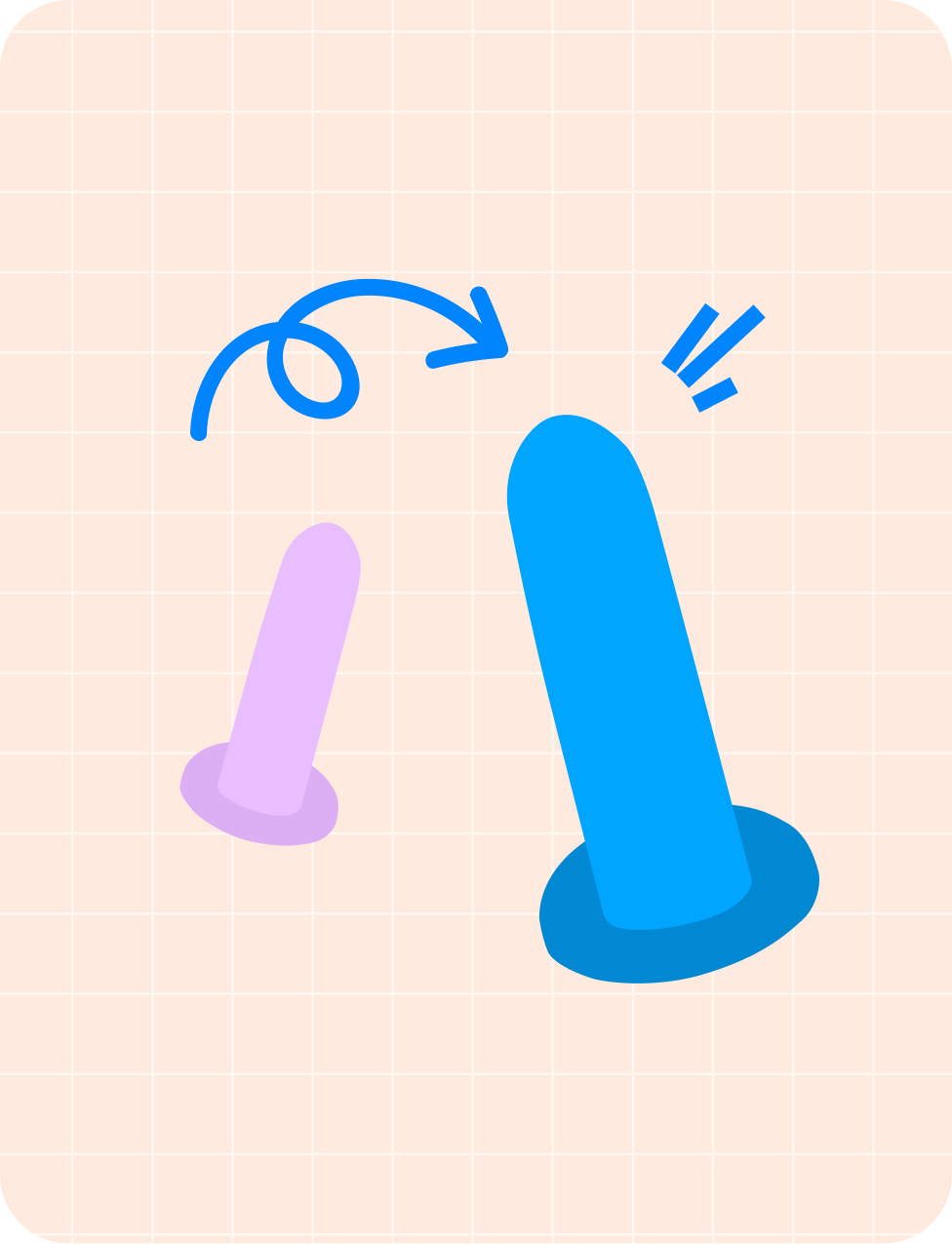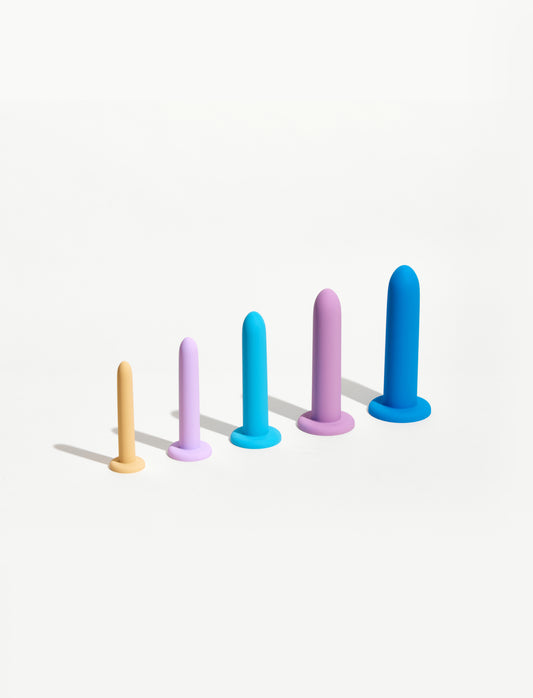Vaginal dilators are tube-like devices made of plastic or medical-grade silicone, used to gently stretch vaginal tissue for treating pelvic pain, vaginal tightness, or medical conditions requiring progressive expansion. The dilator set is designed to help women comfortably transition from smaller to larger sizes at their own pace. If you're wondering how to use dilators for pelvic pain relief, this guide will walk you through the process and provide expert tips for progressing from small to large dilators with confidence.
Step 1: Create a Comfortable Environment
Find a quiet and private space where you can relax. Consider these preparation tips:
-
Find a comfortable position, such as lying down with your knees bent or sitting with your back supported.
-
Take deep breaths to encourage relaxation, as tension in the pelvic floor muscles can make insertion more challenging.
Step 2: Start With the Smallest Dilator
If you're new to dilators, start with the smallest size to ensure a comfortable experience. Insert it slowly and gently, using a water-based lubricant to ease insertion. You may feel mild pressure, but it should never be painful. If your discomfort level is below 4/10, keep the dilator in place and focus on relaxing your belly, pelvic floor, and glute muscles. Hold it in place for 5 to 10 minutes to allow muscle adaptation.
-
If discomfort arises, take a break and try again later.
-
Practice slow, deep breathing to help your pelvic floor relax.
Step 3: Gradually Increase Dilator Sizes
Once you can comfortably insert and hold a dilator for at least 10-15 minutes, gently twist it clockwise and counterclockwise. If this feels manageable, you may be ready to move to the next size. The key is to progress at your own pace without rushing:
-
Continue using each size until it feels comfortable and effortless. Move up to the next size when you feel little to no resistance with your current dilator.
-
Use each new size for several sessions before progressing to a larger one.
Step 4: Maintain Consistency
Consistency is key to achieving results. Aim to use your dilators at least 3 to 4 times a week, or as directed by your healthcare provider. Over time, your body will adapt, and the process will become easier.
Step 5: Listen to Your Body
Progressing through dilator sizes is a personal journey, and it’s important to listen to your body. Some days, you might find it easier than others, and that’s completely normal. Avoid forcing a size that feels too uncomfortable—progress should always be gradual.
Step 6: Celebrate Your Progress
Each step forward is a milestone in your therapy journey to improved comfort and confidence. Whether your goal is pain-free intimacy, recovery after surgery, or managing vaginismus, celebrate each success along the way. Treat yourself to something special, share your achievements with a supportive friend or your partner, or take a moment to reflect on how far you've come.
Final Thoughts
Using the dilator set effectively requires patience, practice, and self-care. By following these steps, you can safely and confidently progress from small to large dilators while reducing discomfort and increasing flexibility. If you experience persistent pain or difficulty, consult a healthcare professional for guidance.
Remember, progress is different for everyone—take your time, stay consistent, and prioritize your comfort above all else.
FAQs
1. How long does it take to progress to the next dilator size?
Progression varies for each woman. Some may move up in a few days, while others take weeks. The key is comfort—only advance when your current size feels easy and painless.
2. Can I use a vaginal dilator every day?
Yes, but most experts recommend using it 3-4 times a week. In any case, avoid doing it 2 or more days in a row. Overuse can cause irritation, so listen to your body and take rest days if needed.
3. What should I do if using a dilator is painful?
Mild discomfort is normal at first, but sharp pain isn’t. Try using more lubrication, relaxing your pelvic muscles with deep breathing, or stepping back to a smaller size. If pain persists, consult a healthcare professional.
4. Can dilators help with menopause-related vaginal tightness?
Yes. Vaginal atrophy from menopause can cause tightness and discomfort. Dilators can gently stretch the tissues and improve elasticity over time. Using a hormone-free vaginal moisturizer alongside dilators can enhance results.
5. How do I clean my dilators properly?
Wash your dilator with mild soap and warm water before and after each use. Avoid harsh chemicals or alcohol-based cleaners, as they can damage the material. Let it air dry completely before storing.




